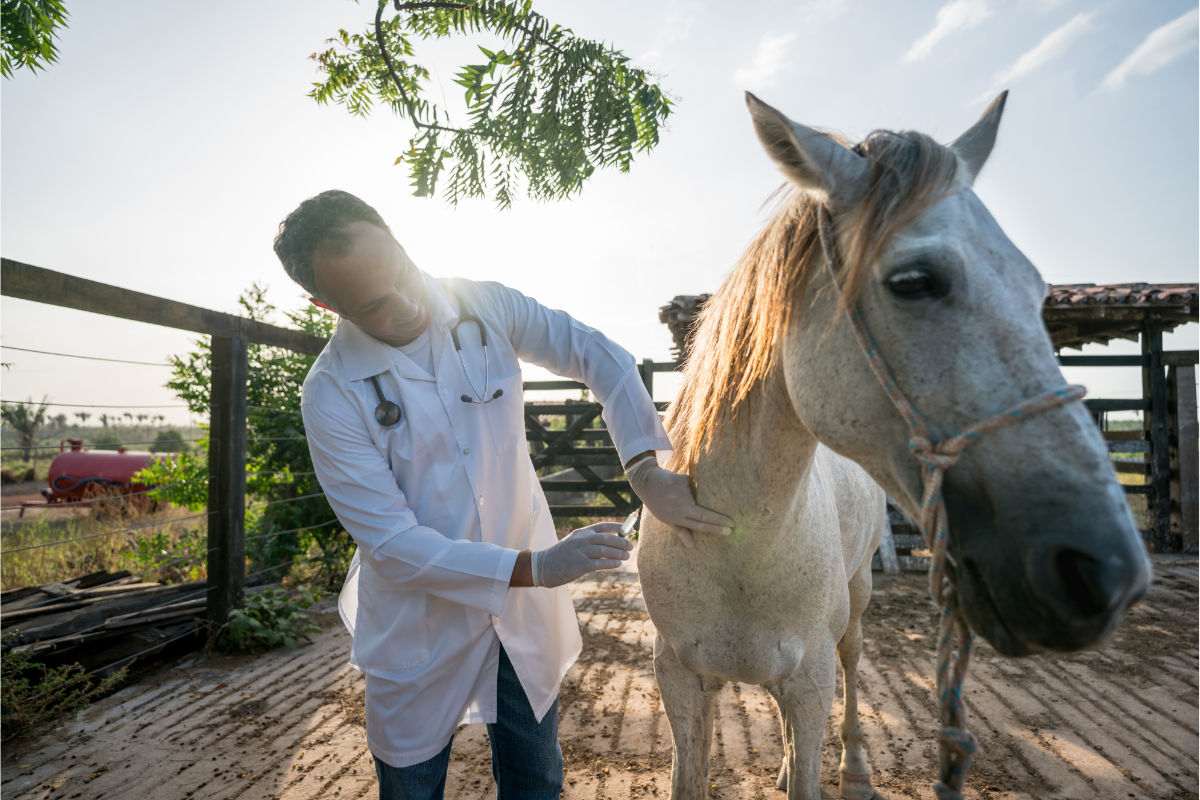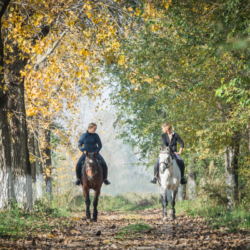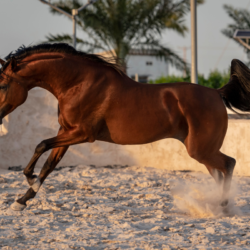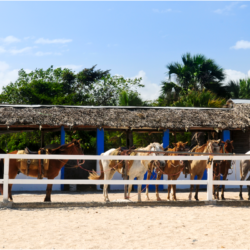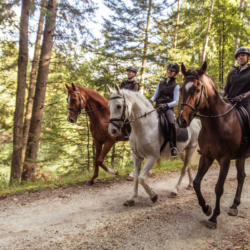Equine influenza, a highly contagious respiratory disease, can have a major economic impact on the equine industry. Protecting the health of your horses through a thorough understanding of this disease is essential.
What causes this disease?
Equine influenza, caused by a type A influenza virus, is a highly contagious respiratory disease. Two subtypes, H7N7 and H3N8, can affect horses. Transmission between different species remains rare, but cases have been reported between birds, dogs and horses. Experts have never observed any transmission of influenza from horses to humans, or vice versa.
Influenza viruses change over time, evading the equine immune response. These variations mean that vaccines need to be regularly modified. The virus is transmitted mainly by inhalation of aerosol particles released by coughing sick horses. The virus can also be transmitted indirectly via equipment or people.
Every year since 2018, vets have reported several outbreaks of influenza to the RESPE (Réseau d’Épidémio-Surveillance en Pathologie Équine). In 2019, they reported more than 50 outbreaks, affecting various structures in the leisure, sport and racing sectors. Equine influenza is the name given to this disease when it affects domestic or wild horses, donkeys and animals resulting from their crosses, as well as zebras.
The virus responsible for equine influenza is of the influenza genus, closely related to the human influenza virus. However, transmission between humans and horses has never been observed. The rapid spread and contagious nature of this disease mean that increased vigilance and regular vaccination are essential to protect equidae and limit the spread of infection.
What are the symptoms of equine influenza?
Symptoms of equine influenza generally appear after an incubation period of 2 to 5 days. The most common clinical signs are
- High fever: The rectal temperature often exceeds 40°C, associated with depression and anorexia.
- Dry, hacking cough: The cough is frequent and may persist for several weeks.
- Nasal discharge: Translucent for the first few days, it often becomes mucopurulent in the event of bacterial superinfection.
In a stable, the intensity of symptoms varies according to the individual and their vaccination status. Some horses may show only discreet signs, such as moderate, fleeting hyperthermia, but remain carriers of the virus and transmit it through close contact.
Recovery generally takes one to two weeks, but complete regeneration of the respiratory tract requires at least three weeks’ rest. Without this period of rest, the respiratory tract remains vulnerable to opportunistic bacterial infections.
Mortality is rare in adult horses, but foals can die from complications such as pneumonia. Symptoms may also include conjunctivitis, oedema of the limbs and muscle pain. Adult horses recover spontaneously in 10 to 15 days, while unvaccinated young horses more frequently develop complications.
How is the disease diagnosed?
Diagnosis of equine influenza is based on observation of clinical signs and the rapid spread of the disease in a stable. However, laboratory tests are needed to confirm the diagnosis. Here are the main diagnostic methods:
- PCR (Polymerase Chain Reaction) test: This method detects the DNA of the virus from a nasopharyngeal swab. It is highly accurate and can identify the virus even in small quantities.
- Serology: The detection of antibodies in the blood can also confirm infection. However, in vaccinated horses, this method is more complex, as the antibodies detected may come from the vaccine. Two blood tests taken two weeks apart can be used to measure the increase in antibodies and confirm infection.
Vets also use virus isolation from nasal swabs to diagnose equine influenza. High fever and contagiousness are important clues, but other respiratory diseases such as rhinopneumonitis or strangles can present similar symptoms.
What treatments are available?
There is currently no specific treatment for equine influenza, which is a viral disease. However, there are measures that can reduce symptoms and prevent complications:
- Symptomatic treatment: Non-steroidal anti-inflammatory drugs are given to reduce fever and relieve other symptoms. Blood thinners may be used to clear bronchial secretions.
- Antibiotics: In the event of bacterial superinfection, antibiotic treatment is necessary.
- Rest: Horses should be rested for at least three weeks after the end of clinical signs. This period of rest is crucial to allow the airways to heal and avoid pulmonary or cardiac sequelae.
During the convalescence period, keep the horse covered and isolated in a clean, well-ventilated area. Offer him palatable food to encourage him to eat.
What are the natural alternatives?
As well as conventional treatments, there are natural alternatives to boost horses’ immune systems and help them fight equine influenza:
- Echinacea: This plant is renowned for its immunostimulant and anti-inflammatory properties. It boosts the immune system and promotes wound healing.
- Acerola: Rich in vitamin C, acerola is recommended for supporting the immune system, particularly in the prevention of viral diseases.
- Rosehip: Rosehip bud macerate is effective against respiratory, joint and skin inflammation. It boosts immunity and has an in-depth effect on fragile skin.
- Eucalyptus and Scots pine: These plants are renowned for their expectorant and antiseptic properties, helping to treat respiratory infections and relieve coughs.
- Thyme: Thyme has antispasmodic and expectorant properties, helping to clear mucus from the respiratory tract.
How can I prevent it?
Prevention of equine influenza is mainly based on vaccination. Here are the main preventive measures:
- Vaccination: It is strongly recommended that all equidae be vaccinated, including those that do not move much. Vaccination significantly reduces clinical signs and viral excretion, thereby limiting the spread of the disease. The vaccination protocol comprises three primary injections and annual boosters. For horses frequently taking part in equestrian events, boosters every six months are recommended.
- Quarantine and disinfection: In the event of contamination, sick horses must be isolated and premises and equipment disinfected. Carers should wash their hands thoroughly and disinfect their boots.
- Epidemiological surveillance: RESPE monitors the development and circulation of viruses in order to adapt vaccine production and prevent epidemics.
These preventive measures are essential to protect the health of horses and avoid the economic repercussions of this highly contagious disease.
Vaccination regulations
In France, vaccination against equine influenza is compulsory for certain horses, particularly those taking part in gatherings such as races, competitions and breeding shows. Here are the main regulations:
- Equestrian events: Horses taking part in races, competitions or other equestrian events must be vaccinated. This obligation is designed to prevent epidemics during gatherings.
- Access to racecourses and training grounds: Vaccination is mandatory for access to these venues. This includes establishments belonging to racing companies.
- Stallions and breeding mares: Stallions used for artificial insemination and certain breeds used for natural breeding must be vaccinated.
Vaccination protocols may vary according to the regulations of Stud Books and National Studs. For example, semen donor stallions for artificial insemination and brood mares of specific breeds have strict vaccination requirements.

